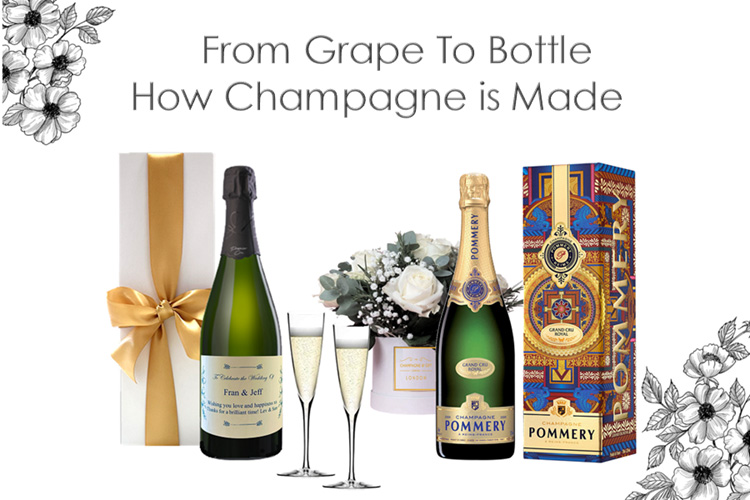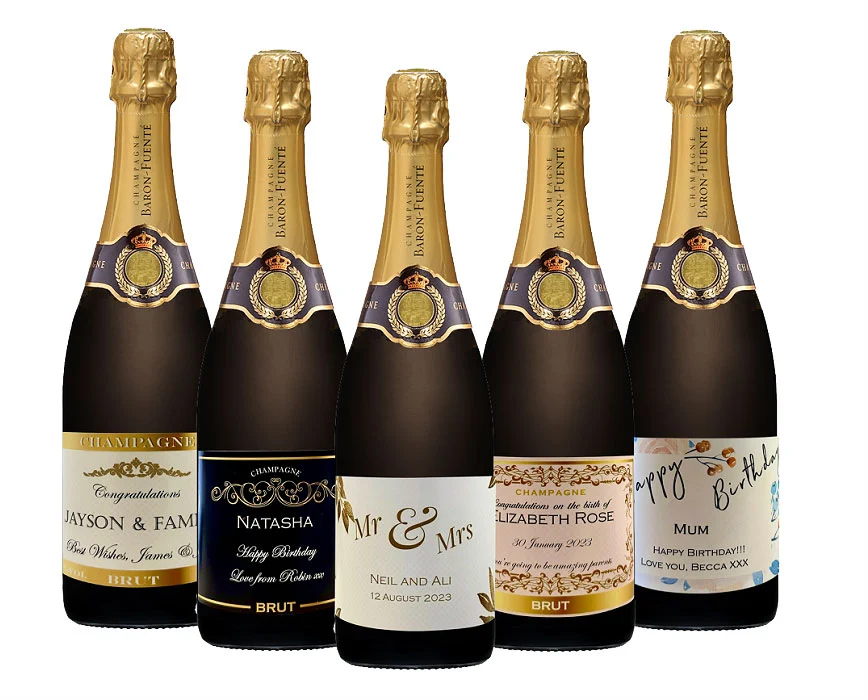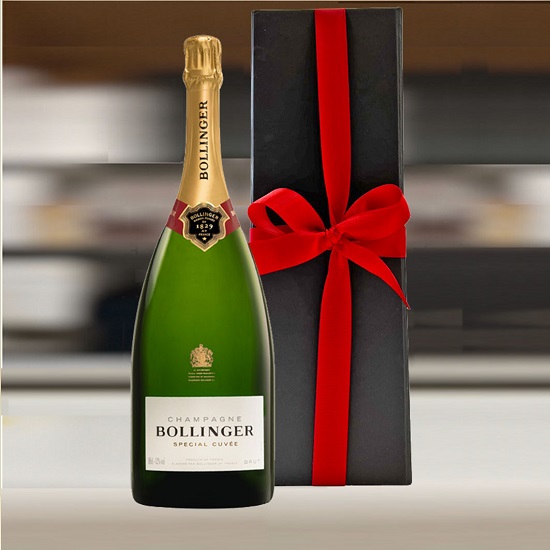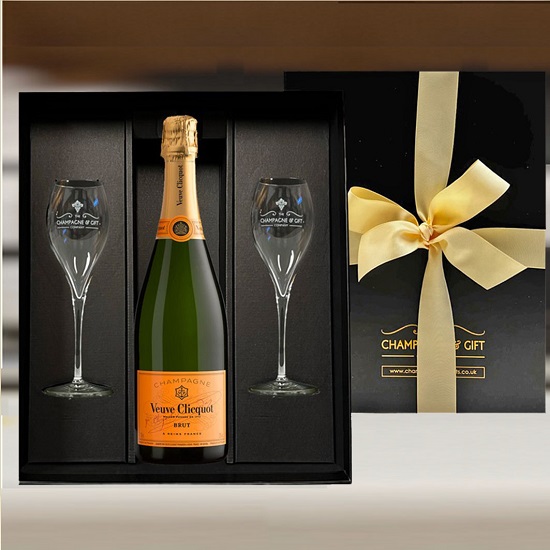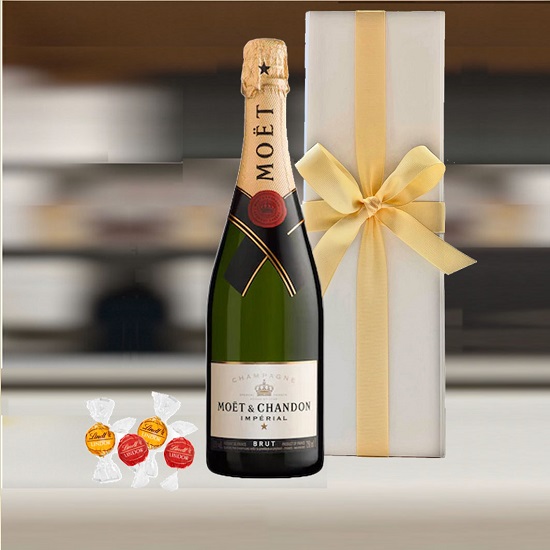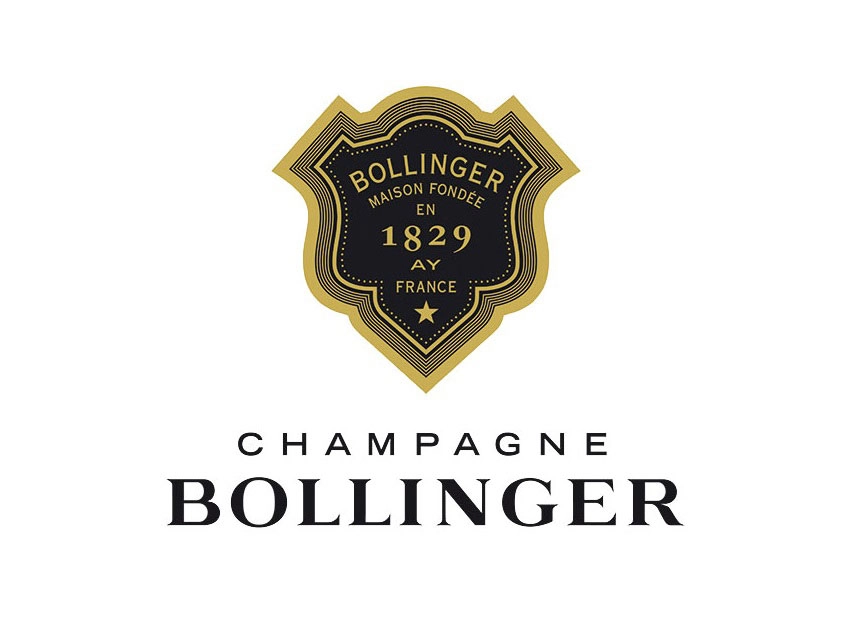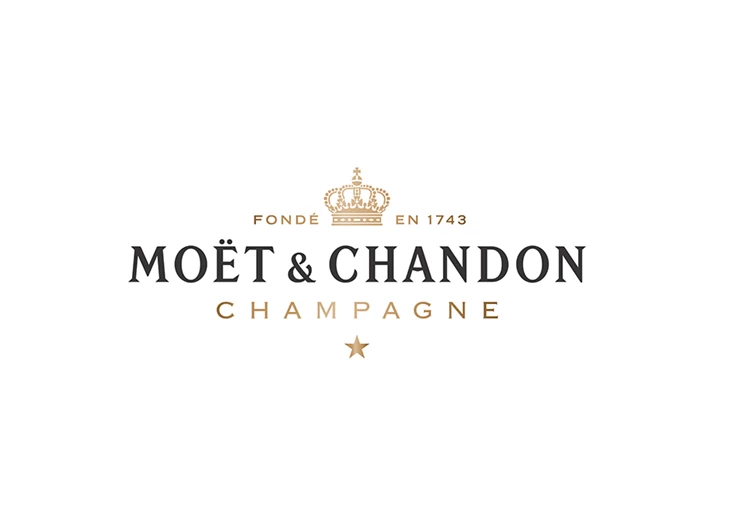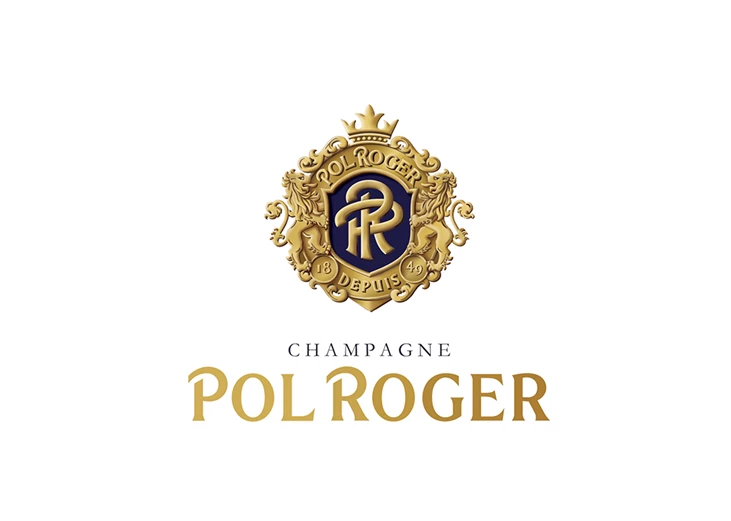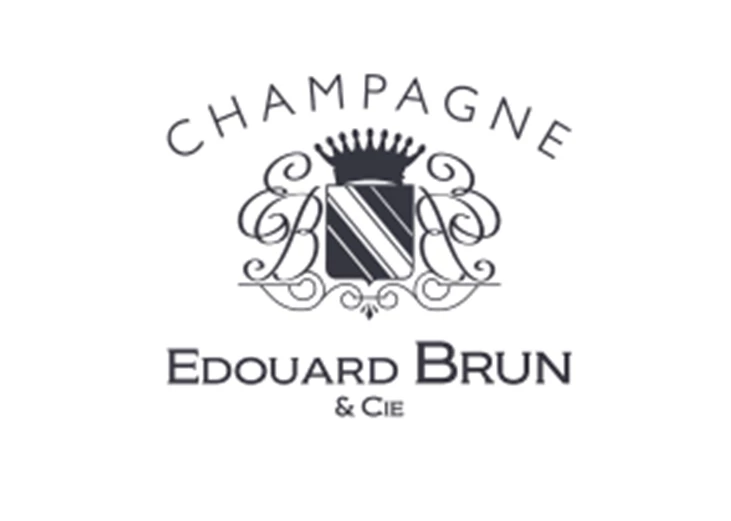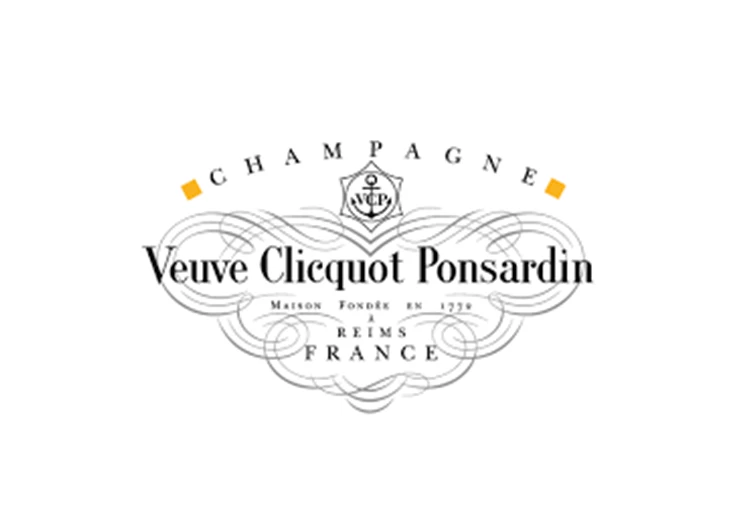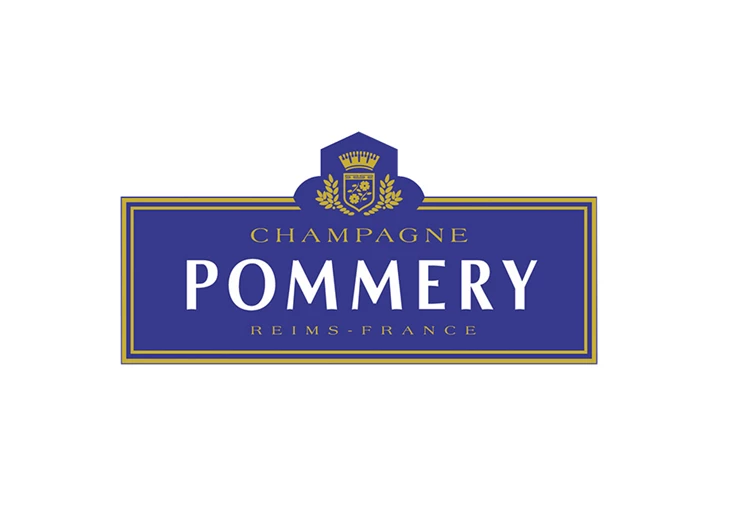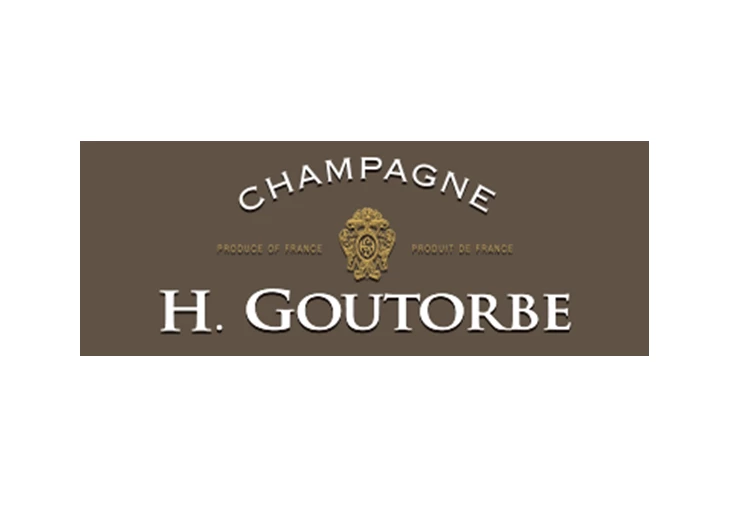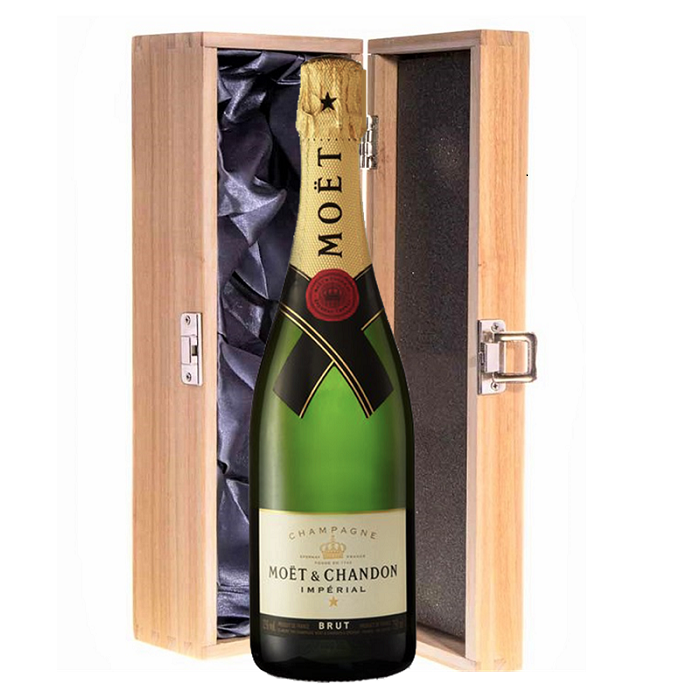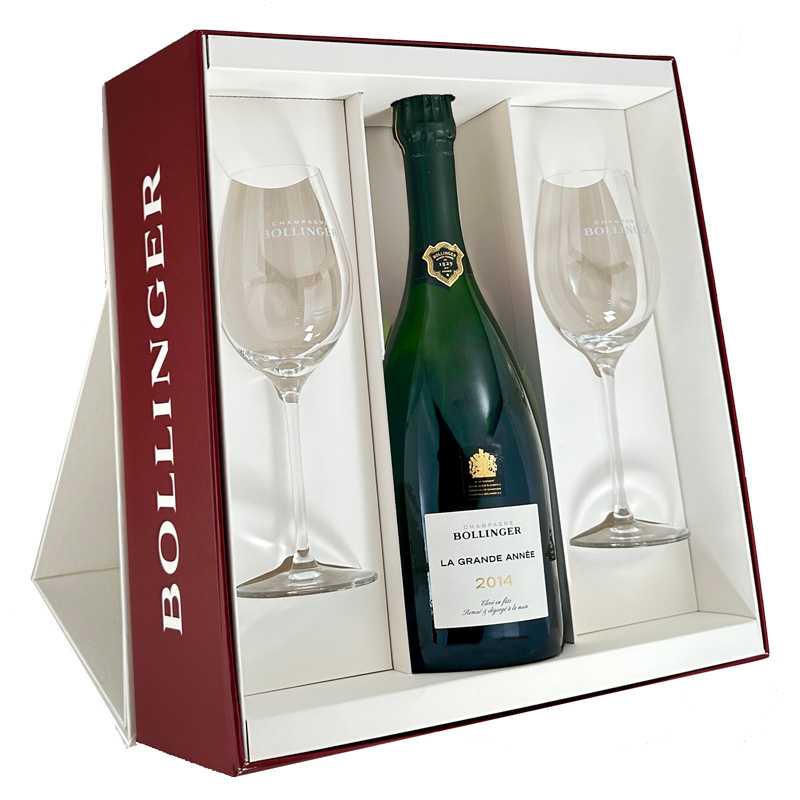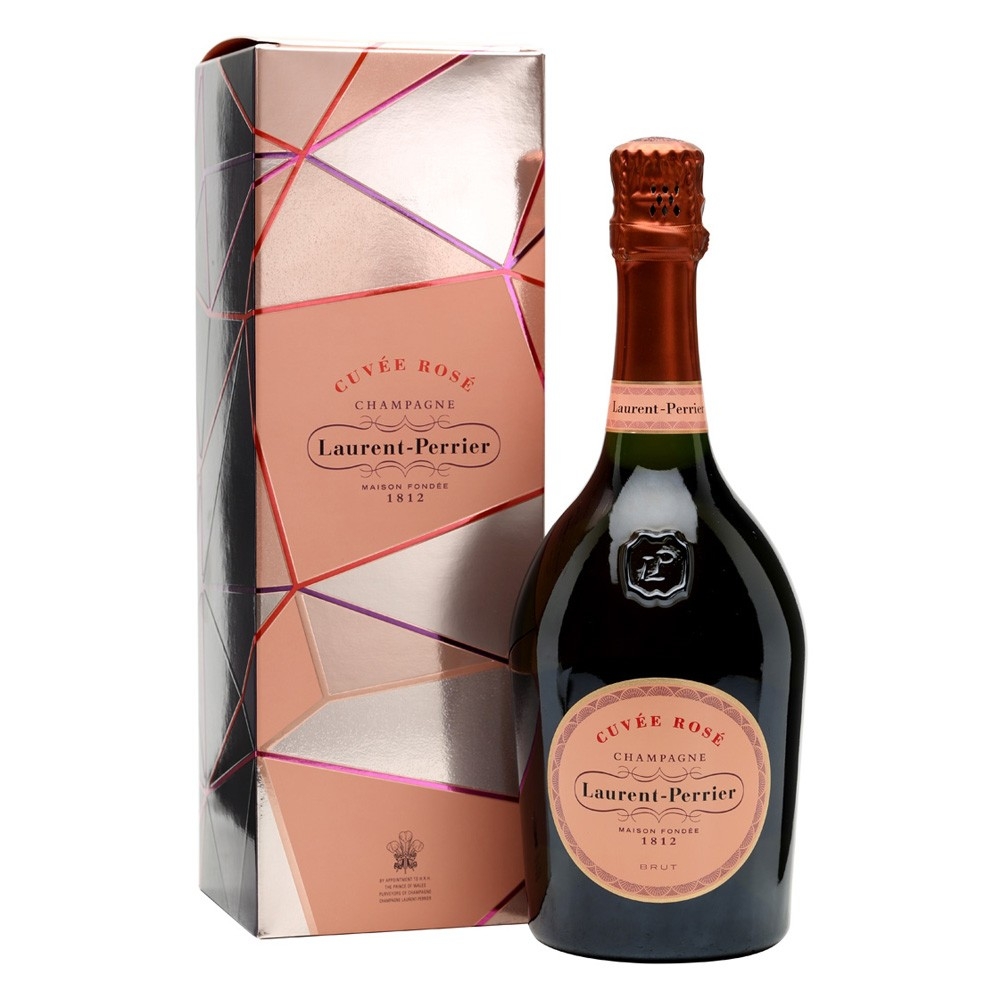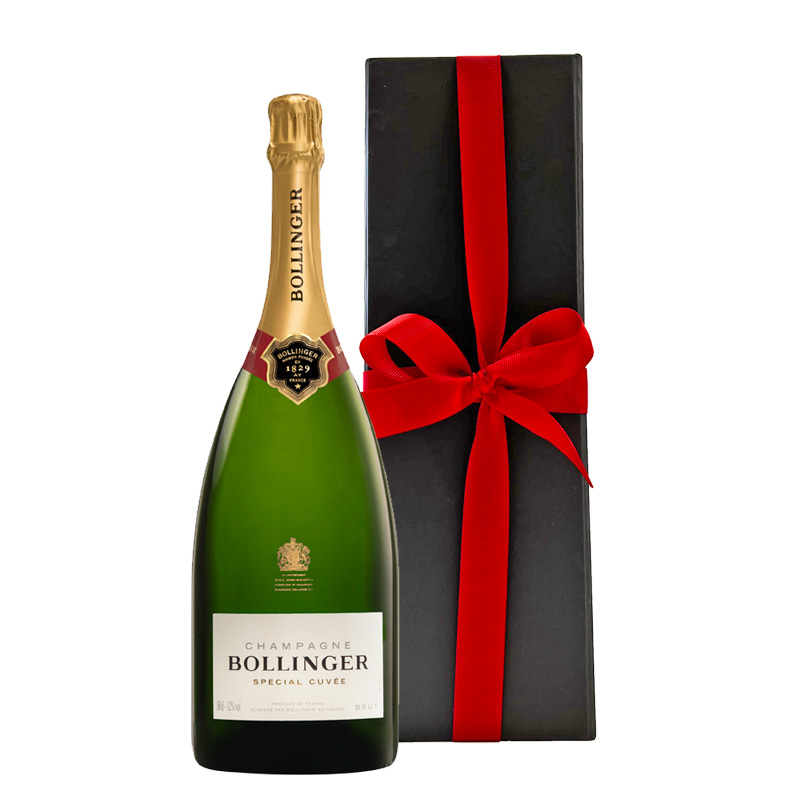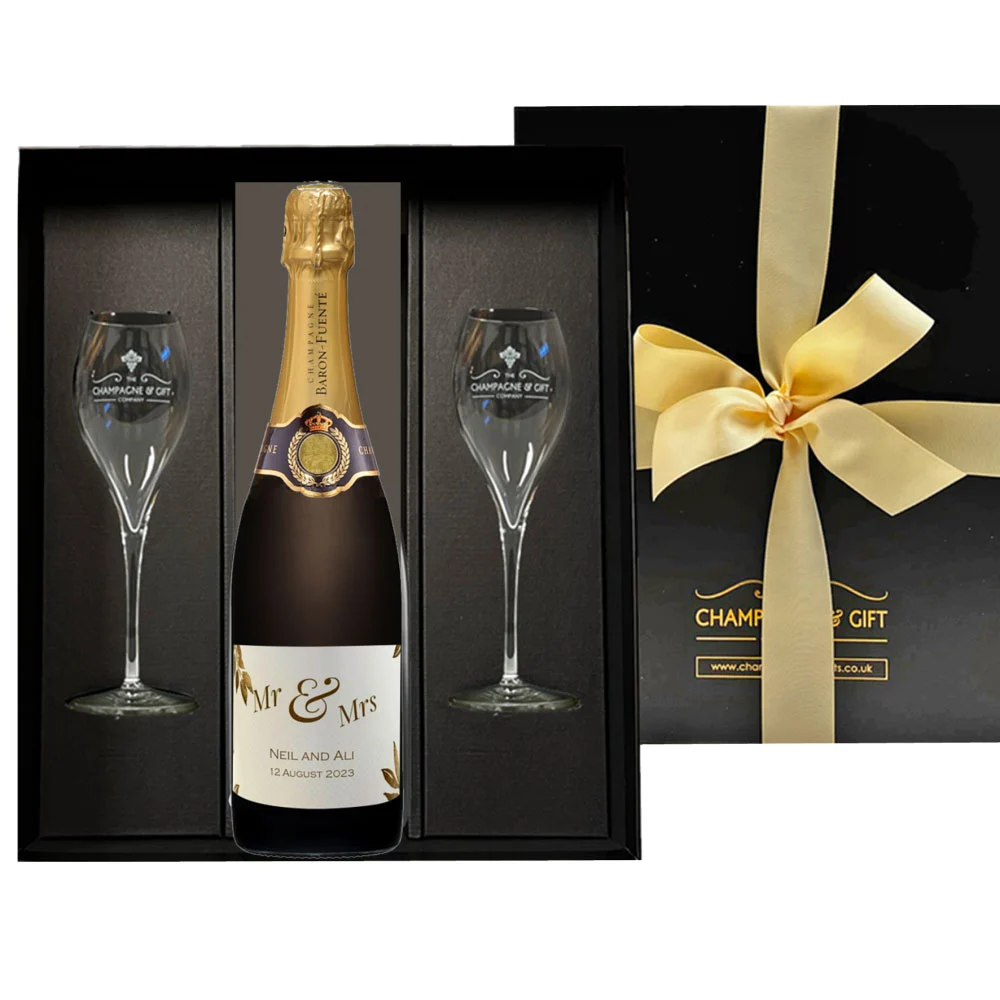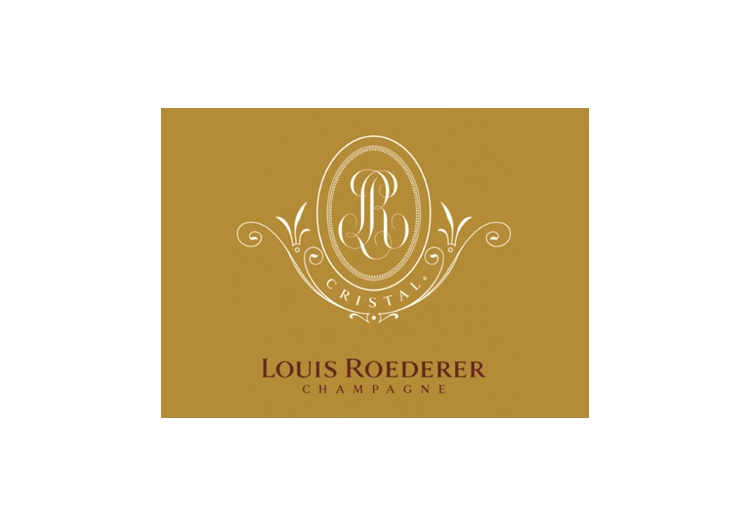How Champagne Is Made
Your Complete Guide To The Champagne Making Process From Grape to Glass
Harvesting by Hand-Picking The Grapes, Crushing The Grapes into wine, Primary Fermentation, Bottling, Blending, Second Fermentation, Disgorgement, Corking and Cellaring.
We hope you enjoy our Guide and your Champagne!
Method Champenoise - How Champagne is Made
Champagne is an extremely complex blended wine — not only a blend of grape varieties but also a blend of wines from different vintages and different vineyards throughout the Champagne region of France. We are often asked, "How is Champagne Made?" It all starts with the harvesting of the grapes and then goes through an exact process called Méthode Champenoise. This refers to wine made in the Champagne region of France using the technique. The blend, called the cuvée, combines the strengths of each vineyard. Which grapes are included in the blend, and their proportion is one of the key factors determining the style of the Champagne. |
| Is Champagne a protected name - yes! The French want to protect the use of the term "Champagne" to refer only to Champagne made using traditional methods from grapes grown and wine produced in the Champagne region of France. There are very strict rules READ MORE . . . |
![]()
The Harvest Is A Special Time In The Champagne Region

The first and most vital part of producing a good Champagne is the harvesting of the grapes. Harvests in Champagne are carried out entirely by hand and no machines can be used. The reason for this is very significant, Champagne is a white wine but includes some black grapes in the mix as well as white grapes. To be able to make white wines from a percentage of black grapes, the grapes must be picked with the utmost care and speed. They must be taken to the press quickly to avoid prolonged contact between the juice and the skins to avoid the colour of the skin altering the colour of the wine. There are a limited few weeks in which the grapes are allowed to be picked and it is illegal for anyone to pick outside this time. The quantities picked are also strictly regulated and each vineyard has an annual authorised harvest yield. The aim is to favour quality over quantity. The harvests represent a truly important time of year for Champagne, Everything hinges on a successful harvest and everything must be choreographed to deliver yields that promise exquisite cuvées in the future. |
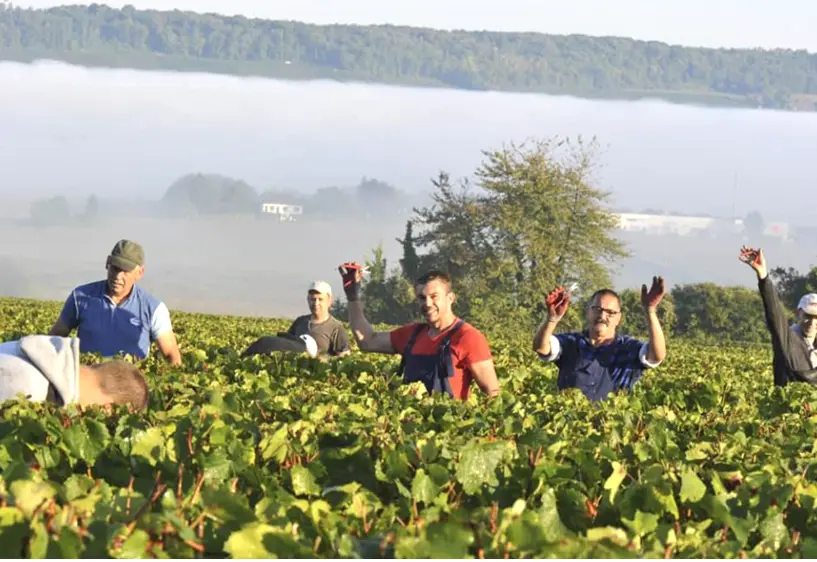 Pictures courtesy of BaronFuente.com
Pictures courtesy of BaronFuente.com
What grape varieties are used to make Champagne? CLICK HERE
![]()
What Is the Méthode Champenoise Process?
Note: The European Union has restricted the use of the term Méthode Champenoise,
which solely refers to wine made in the Champagne region of France using the technique.
Tirage
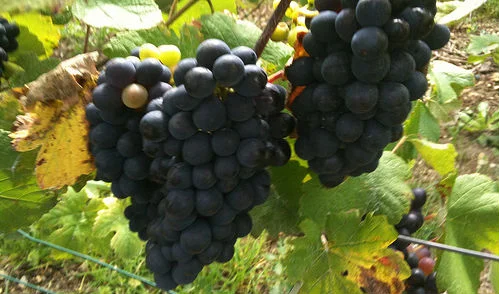
| First, the grapes are harvested and pressed into liquid then the resulting grape must is transformed into alcohol. To do this the winemaker adds a mixture of sugar and yeast cells to the still wine and it is put through one round of fermentation. |
Bottling
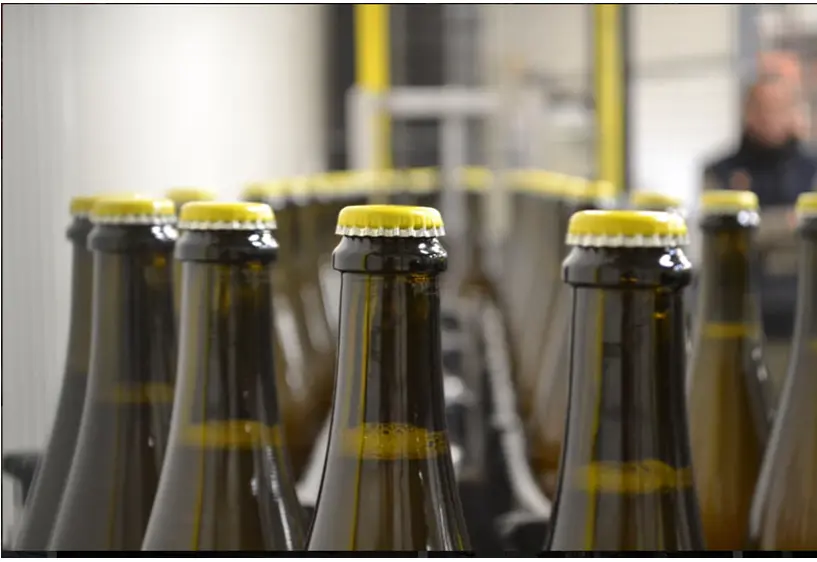
| The base wine is decanted into bottles and fitted first with a crown cap similar to a bottle of beer (not a cork). The bottles are then placed on racks and are laid horizontally – this is vitally important so that the bottles can be riddles (see below) |
Riddling
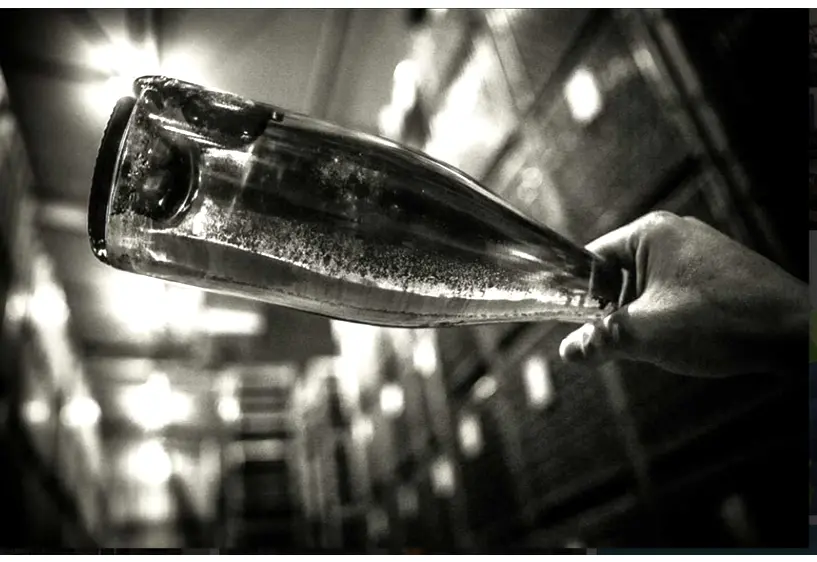
| This system was developed by Madame Clicquot back in the 1800s! Each day every bottle on the wine racks is given a quarter-turn in order to unsettle and rotate the sediment. The sediment on the bottles is called lees - it is a cloudy byproduct of yeast. |
Disgorgement
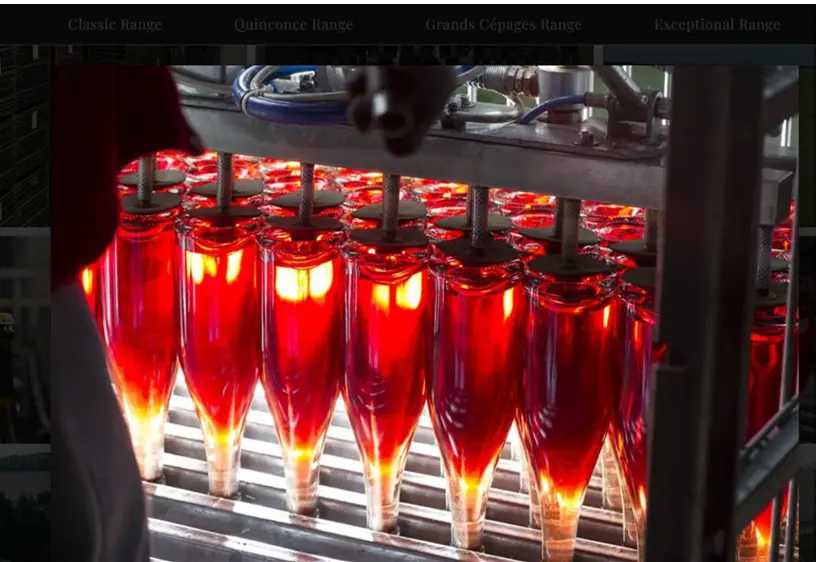
| In the final phase, the bottles are flipped upside down. This means that the lees will settle in the neck of the bottle. Disgorging allows the winemaker to remove the lees. Obviously, the winemaker does not want to sacrifice any of the pristine sparkling wine left behind the lees. Most do this by freezing only the neck, and quickly extracting the solids. |
Dosage
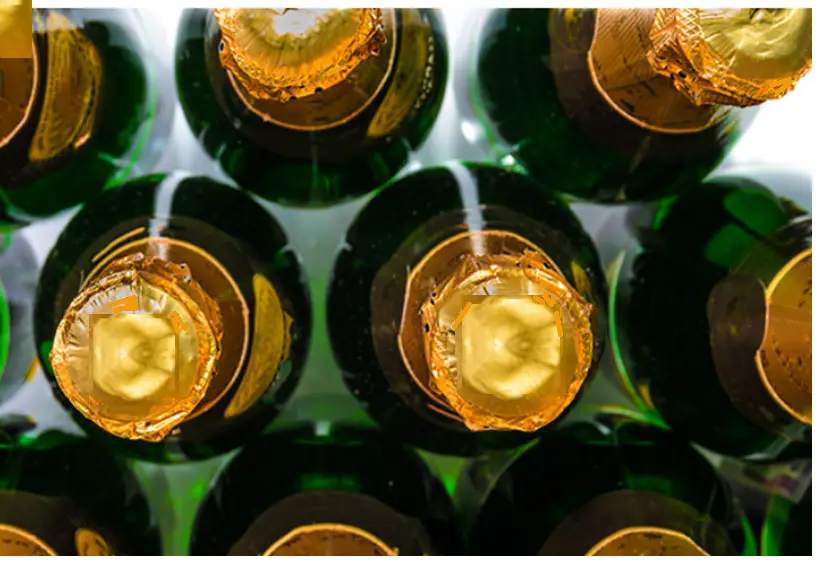
| With the lees removed, the bottles are in need of a small top-up. This is referred to as the dosage. A mixture of sugar diluted in wine which has been saved from previous years is added to each bottle. The levels of dosage influence the Champagne dryness/sweetness on the palate and the consistency of taste from year to year. |
Champagne - A Brief Guide & Useful Terms and Words - Read More . . .
Corking
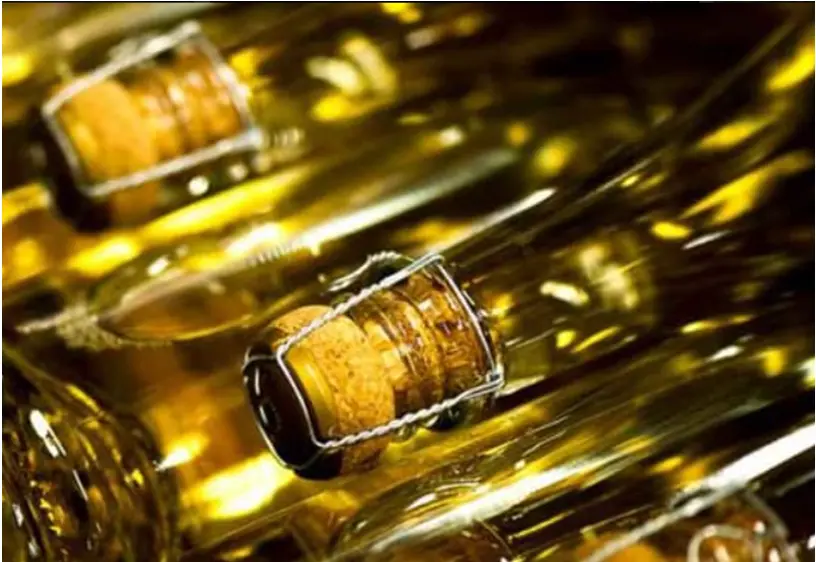
After dosage, the wine is corked with a cork stopper held in place by a wire cage called a Muselet. The Champagne is then cellared for another few months (or years for finer cuveés and vintages). In practice, most Champagne wines are cellared for much longer: 2-3 years for non-vintage wines and 4-10 years for vintage Champagne. |
VINTAGE CHAMPAGNE
Vintage Champagne is not just any sparkling wine! It is a testament to a particular year's excellence. Unlike non-vintage Champagne, which blends wines from multiple years to achieve a consistent taste, vintage Champagne is made exclusively from grapes harvested in a specific year. This means that each bottle is a snapshot of the unique climatic conditions, grape quality, and winemaking techniques of that year.
CLICK HERE TO READ MORE about the best years for Vintage Champagne and more ...

Sourcing from top producers we pride ourselves on the quality, taste and smoothness of our Champagne. |
The Champagne and Gift Company
Leading supplier of personalised Champagne and Branded Champagne gifts
